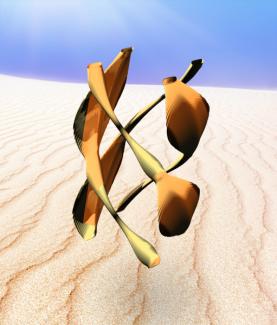The Greene group just figured out everything you theoretically might want to know about four fermions "crashing" into each other at low energies. Low energies in this context mean ultracold temperatures under conditions where large, floppy Feshbach molecules form. The group decided to investigate four fermions because this number makes up the smallest ultracold few-body system exhibiting behaviors characteristic of the transition between Bose-Einstein condensation and superfluidity. Senior research associate José D’Incao, graduate student Seth Rittenhouse, former research associate Nirav Mehta, and Fellow Chris Greene participated in the study.
The researchers found that inelastic collisions can occur between two Feshbach molecules. One of two things will happen: either (1) one of the Feshbach molecules falls apart, or (2) one of the molecules gets knocked into a lower-energy state and releases enough energy to send everything else flying out of the trap. In the latter case, the new theory is able to predict the rate at which the molecules relax into lower energy states. The rate curve arcs nicely through experimental data on Feshbach molecules from the Jin group.
In very, very low-energy collisions, the size of the Feshbach molecules determines the efficiency with which they bounce off each other during a collision. In other words, the strength of the intermolecular interaction is proportional to the size of the molecules. This relationship confirmed an earlier prediction by research associate Javier von Stecher when he was a graduate student in the Greene group. The group had previously confirmed and improved upon earlier predictions by other theorists.
To showcase what happened during collisions of four fermions, Rittenhouse created a projection of what occurs when they interact. The projection, shown here with cirrus clouds, blue sky, sand, and shadows added for aesthetic effect, looks like four cobras locked in an intricate and symmetrical dance. Each narrow spine (body) corresponds to two fermions (one spin up and one spin down) at the point where they coalesce to form a molecule. The spread-out portions (heads) indicate where the probability maxima become more diffuse. What it really shows is that even when Feshbach molecules are really small, they like to hang out on top of each other. - Julie Phillips




